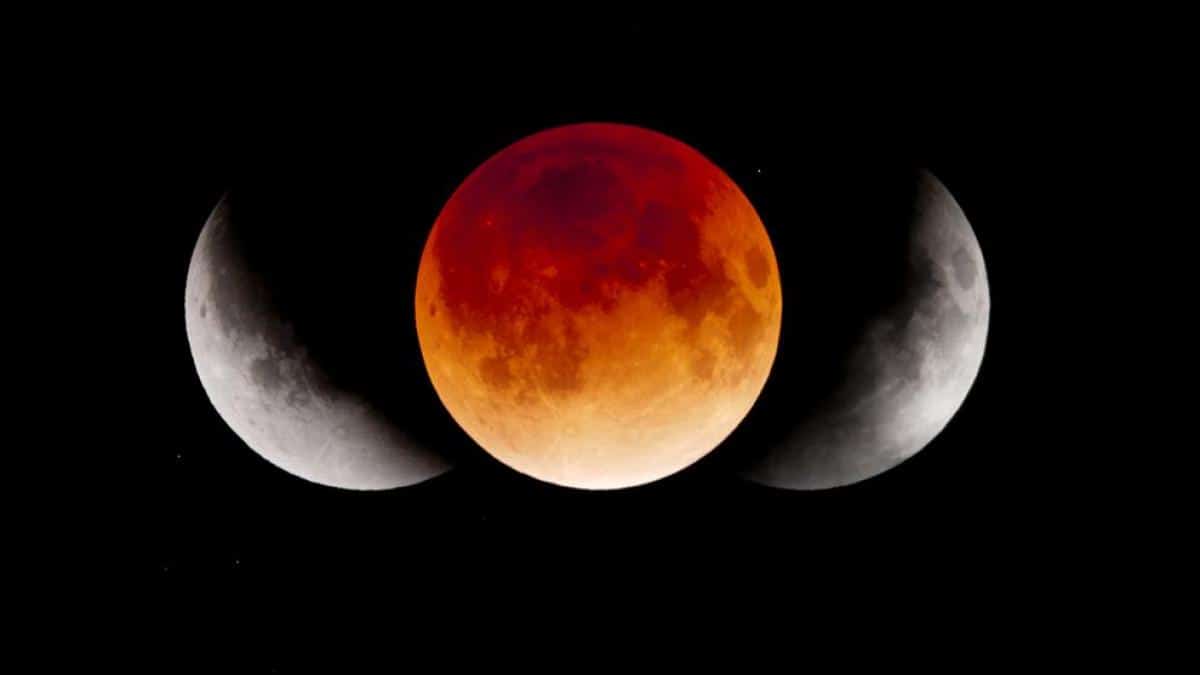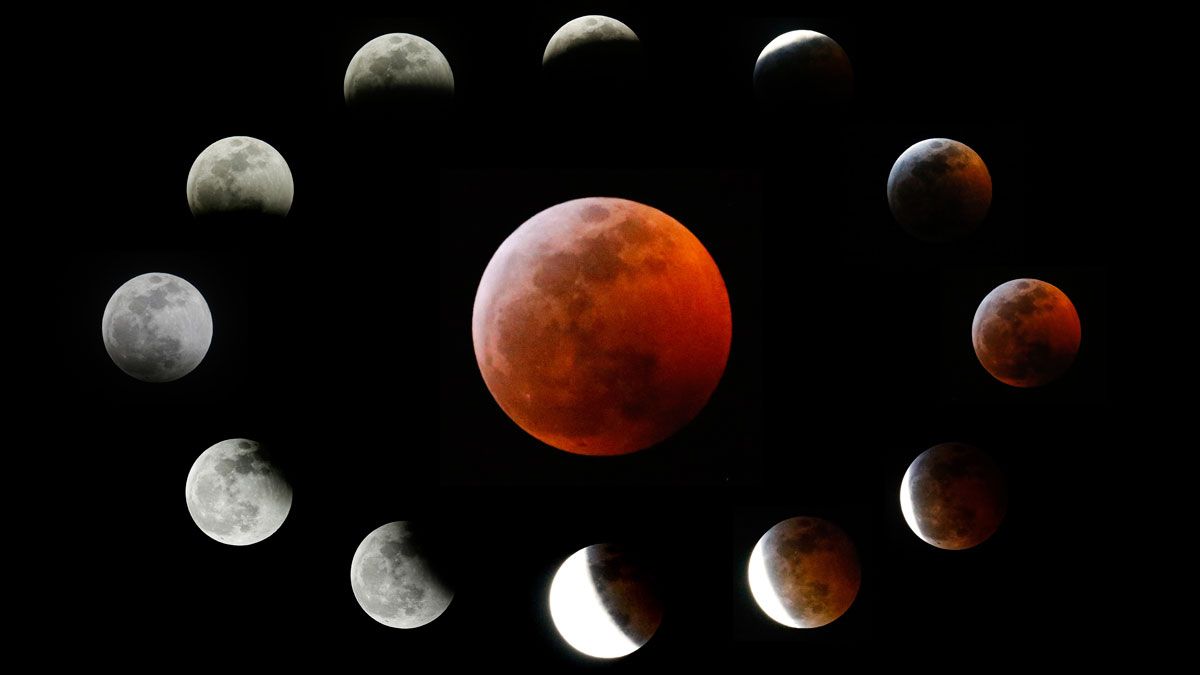
One of the phenomena that most surprises the population is the eclipse of the sun. However, many people do not know what is a lunar eclipse. A lunar eclipse is an astronomical phenomenon. When the earth passes directly between the moon and the sun, the shadow of the earth caused by sunlight is projected onto the moon. To do this, the three heavenly bodies must be in or near "Syzygy". This means that they form in a straight line. The type and duration of a lunar eclipse depend on the position of the moon in relation to its orbital node, which is the point where the moon's orbit intersects the plane of the solar orbit.
In this article we are going to tell you what a lunar eclipse is, what are its characteristics and what is its origin.
What is a lunar eclipse

To know the types of lunar eclipses, we must first understand the shadows that the earth produces under the sun. The bigger our star is, it will produce two types of shadows: one is the darker cone shape called the umbra, which is the part where the light is completely blocked, and the penumbra is the part where only part of the light is blocked. . There are 2 to 5 lunar eclipses each year.
The same three celestial bodies intervene in a solar eclipse, but the difference between them lies in the position of each celestial body. In a lunar eclipse, the earth is located between the moon and the sun, casting a shadow on the moon, while in a solar eclipse, the moon is located between the sun and the earth, casting its shadow on a small part of the latter. .
A person can view a lunar eclipse from any area on earth, and satellites can be seen from the horizon and at night, whereas during a solar eclipse, they can only be seen briefly in certain parts of the earth.
Another difference with a solar eclipse is that a total lunar eclipse lastedan average of 30 minutes to an hour, but it can take several hours. This is simply the result of the larger Earth relative to the smaller moon. On the contrary, the sun is much larger than the earth and the moon, which makes this phenomenon very short-lived.
Origin of the lunar eclipse

There are 2 to 7 lunar eclipses each year. According to the position of the moon with respect to the shadow of the earth, There are 3 types of lunar eclipses. Although they are more frequent than solar eclipses, they do not occur every time the full moon is due to the following conditions:
The moon must be a full moon, that is, a full moon. In other words, relative to the sun, it is completely behind the earth. The earth must be physically located between the sun and the moon so that all celestial bodies are in the same orbital plane at the same time, or very close to it. This is the main reason why they do not occur every month, because the moon's orbit is tilted about 5 degrees from the ecliptic. The moon must totally or partially pass through the earth's shadow.
Types of lunar eclipse

Total lunar eclipse
This happens when the moon as a whole passes through the shadow of the earth's threshold. In other words, the moon completely enters the cone of the umbra. In the development and process of this type of solar eclipse, the moon goes through the following sequence of eclipses: penumbra, partial eclipse, total eclipse, partial and penumbra.
Partial lunar eclipse
In this case, only part of the moon enters the earth's shadow threshold, so the other part is in the twilight zone.
Twilight lunar eclipse
The moon only passes through the twilight zone. It is the most difficult type to observe because the shadows on the moon are very subtle and precisely because the penumbra is a diffuse shadow. What's more, if the moon is completely in the twilight zone, it is considered a total twilight eclipse; If part of the moon is in the twilight zone and the other part has no shadow, it is considered a partial eclipse of twilight.
Steps
In a total lunar eclipse, a series of phases can be distinguished by the moon's contact with each shaded area.
- The twilight lunar eclipse begins. The moon is in contact with the outside of the penumbra, which means that from now on, one part is within the penumbra and the other part is outside.
- The beginning of a partial solar eclipse. By definition, a partial lunar eclipse means that one part of the moon is located in the threshold zone and the other part is located in the twilight zone, so when it touches the threshold zone, the partial eclipse begins.
- The total solar eclipse begins. The moon is completely within the threshold area.
- Maximum value. This phase occurs when the moon is in the center of the umbra.
- The total solar eclipse has ended. After reconnecting with the other side of the gloom, the total solar eclipse ends, the partial solar eclipse begins again, and the total eclipse ends.
- The partial solar eclipse has ended. The moon completely leaves the threshold zone and is completely in twilight, signifying the end of the partial eclipse and the beginning of twilight again.
- The twilight lunar eclipse ends. The moon is completely out of twilight, signifying the end of the twilight lunar eclipse and the lunar eclipse.
Some history
In early 1504, Christopher Columbus sailed for the second time. He and his crew were in the north of Jamaica, and the locals began to doubt them, they refused to continue sharing food with them, causing serious problems for Columbus and his people.
Columbus read from a scientific paper at the time that included the lunar cycle that a solar eclipse would soon occur in the area, and he took this opportunity. The night of February 29, 1504 wanted to show his superiority and threatened to let the moon disappear. When the locals saw him let the moon disappear, they begged him to return it to its original state. Apparently it did so a few hours after the eclipse ended.
In this way, Columbus managed to get the locals to share their food.
I hope that with this information you can learn more about what a lunar eclipse is and its characteristics.